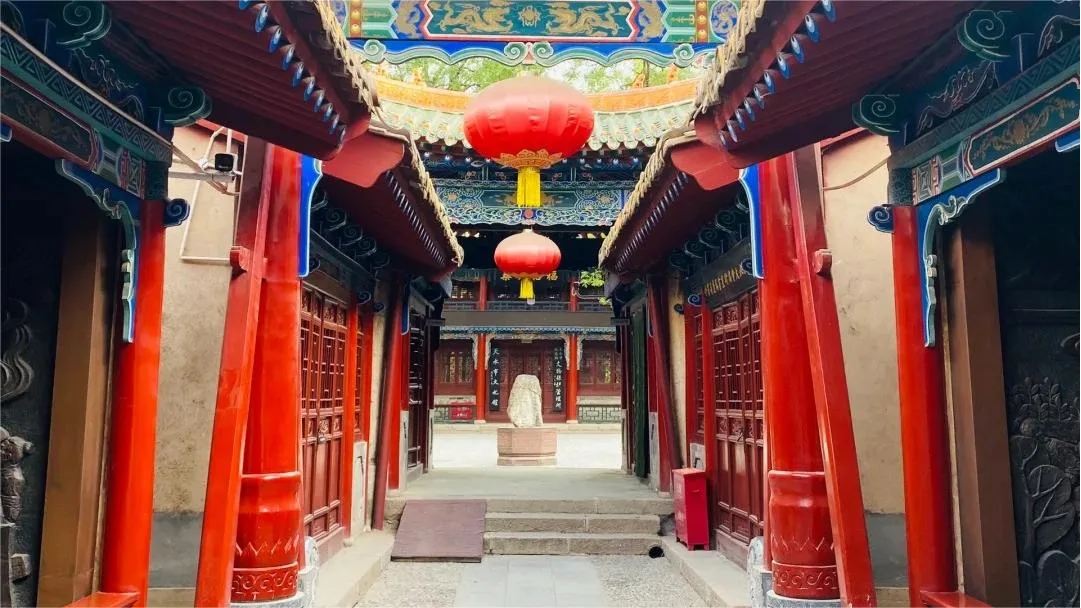Jixin Shrine (纪信祠), also known as the Tianshui City God Temple (天水城隍庙), covers an area of approximately 3,500 square meters. It is an ancient architectural complex dating from the Ming Dynasty to the Republic of China period. The shrine is dedicated to Ji Xin, a famous general from the Western Han Dynasty.
Ji Xin, known as the City God of Tianshui, was a general under Liu Bang, the founder of the Han Dynasty. He joined Liu Bang’s uprising against the Qin Dynasty. Due to his resemblance to Liu Bang, Ji Xin disguised himself as Liu Bang during the critical siege of Xingyang City and surrendered to Xiang Yu, the rival warlord, to buy time for Liu Bang’s escape. Xiang Yu admired Ji Xin’s loyalty and tried to persuade him to join his side, but Ji Xin refused. Eventually, Ji Xin was executed by fire. In honor of his sacrifice, later generations built this shrine to commemorate him.
Table of Contents
- Basic Information
- Location and Transportation
- Highlights of Jixin Shrine
- Other Attractions in Tianshui Urban Area
Basic Information
| Estimated Length of Tour | 0.5 – 1 hour |
| Ticket Price | Free |
| Opening Hours | 8.00 – 17.00 |
Location and Transportation
Jixin Shrine is located on the west side of No. 52 Minzhu East Road, Qinzhou District, Tianshui City, Gansu Province. To get there, you can take bus 1, 2, 3, 4, 5, 22, or K2 and get off at Department Store Stop (百货大楼站).
Highlights of Jixin Shrine
The Jixin Shrine was originally constructed during the Jin Dynasty and underwent several renovations and expansions throughout the Ming, Qing, and Republican eras. The shrine stretches about 23 meters wide from east to west and 152.2 meters long from north to south. The complex features a three-gate, four-courtyard layout along the north-south central axis, flanked by additional structures. Key buildings include: Wooden Archway, Brick Carving Gatehouse, Five Phoenix Tower, Bell and Drum Towers, Western Viewing Tower, Worship Hall, Offering Hall, Main Hall, and Sleeping Palace.
Inside the Tianshui Jixin Shrine, the mural titled “City God’s Tour” is a well-preserved piece that promotes Taoist teachings. In 2004, during restoration work on the main hall by the Maijishan Grottoes Art Research Institute, workers unexpectedly uncovered this mural hidden beneath the crumbling surface plaster. The mural dates back to the fifth year of the Tianqi period (1625) as indicated by an inscription found on the roof ridge, which reads “Tianqi fifth year, third month, third day – Zhang Deng.”
The mural is located on the west gable wall of the main hall and measures nearly 4 meters in height and over 7 meters in width, covering an area of about 30 square meters. It depicts the City God Ji Xin at the center, surrounded by over 20 Taoist deities and civil and military officials. Ji Xin is portrayed with a solemn and imposing expression, while the surrounding deities and officials are depicted in respectful and dynamic postures, either holding ceremonial objects or engaging in conversation. The scene is enveloped in clouds and accompanied by celestial music, exuding an aura of grandeur and tranquility, characteristic of the Ming Dynasty art style.






